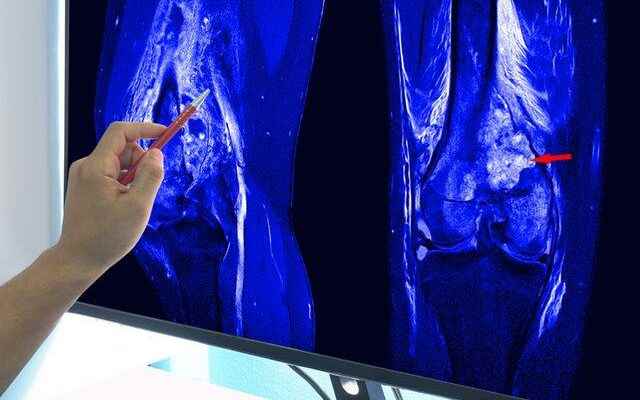Acıbadem Fulya Hospital Orthopedics and Traumatology Specialist Assoc. Dr. Seyit Ali Gümüştaş “Bone tumors usually progress slowly. Benign tumors are about 100 times more common than malignant tumors. Early diagnosis in malignant tumors facilitates the removal of the arm or leg where the tumor is located and increases the patient’s life expectancy. Collaboration of orthopedics, radiology and pathology physicians is extremely important in the diagnosis of bone tumors. However, delaying going to the hospital and applying to the doctor for some complaints during the pandemic process may cause the disease to progress further.
5 SIGNALS OF BONE TUMOR!
Emphasizing that listening to the patient’s complaints and physical examination play a key role in the diagnosis, Assoc. Dr. Seyit Ali Gümüştaş explained the 5 prominent symptoms of bone tumors and made important warnings and suggestions.
NON-GOING PAIN
It is the most common reason for admission in bone tumors. In malignant tumors, pain that responds to painkillers for a short time, does not go away, and even increases in severity develops. While the pain, which is mild at first, gets worse over time, this problem continues at rest. Although pain awakening at night is an indicator of malignant bone tumors, it can also rarely be seen in benign tumors (osteoid osteoma).
SWELLING
Like persistent pain, swelling should also suggest the possibility of a bone tumor. Swelling or stiffness in the painful area is a common symptom of a bone tumor, whether benign or malignant. The patient develops irregularly limited, hard, immobile and rapidly growing swelling, especially around the knee, shoulder and hip. The fact that the swelling is painful should be a warning in terms of being malignant, and it should not be overlooked with painkillers, and a physician should be consulted as soon as possible.

LIMPING
Since malignant tumors originating from both the bone itself and another organ and spreading to the bone often involve the hip and knee circumference, patients may apply to the physician with the complaint of limping. The reason for this complaint is weakness and pain due to destruction of the involved bone. For this reason, in cases of possible limping, one should be cautious and a physician should be consulted by not neglecting lameness that does not develop due to any external factor.
BROKEN
Although it is not as common as pain and swelling, both benign and malignant bone tumors can spontaneously cause bone fractures. Both can cause destruction in the bone where they are placed. The feeling of pain before, the presence of mild trauma, the patient’s known history of cancer, and the presence of destruction in the fractured bone should suggest the possibility that the fracture may have developed due to the tumor.

Numbness and Weakness
Especially in spinal tumors, depending on the region where the tumor is located, the patient may apply to the physician with numbness and weakness in the arms or legs, while constipation may be the only complaint in the tumor of the coccyx. However, complaints such as weakness, fatigue, loss of appetite, and weight loss involuntarily should not be neglected, and the underlying cause should be investigated. In addition to all these complaints, benign bone tumors are usually detected incidentally on an X-ray taken for another reason, while metastatic bone tumors can often be detected in the routine screening of cancer patients.
